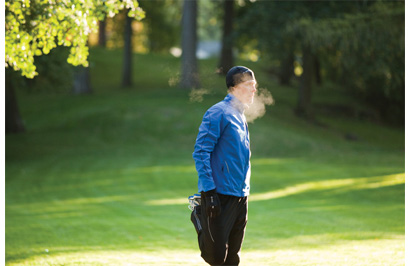by Katie McDonald Neitz from Runner’s World Guide to Road Racing
 Check the weather, and dress for your race as if it’s about 20 degrees F warmer than the thermometer actually reads. This rule of thumb helps you dress for how warm you’ll feel at mid-run, not the first mile, when your body is still heating up.
Check the weather, and dress for your race as if it’s about 20 degrees F warmer than the thermometer actually reads. This rule of thumb helps you dress for how warm you’ll feel at mid-run, not the first mile, when your body is still heating up.
This doesn’t account for significant wind-chill, however, so on very windy days, you may need to dress warmer. If it’s a chilly morning and you’ll be standing at the starting line for an hour or two (the case at the New York City and Boston Marathons), you might want to bring an extra layer that you can check at the starting area.
Most of the big races offer this service, which allows you to put your clothes in a bag and pick them up at the finish. Some runners keep it simple and opt for throwaways that race organizers collect from the roadside and donate to charity.
| Temperature | Basic Apparel Suggestions |
| ..70°F and Above | ..Lightweight/light-colored singlet, shorts |
| ..From 60° to 69°F | ..Tank top or singlet, shorts |
| ..From 50° to 59°F | ..T-shirt, shorts |
| ..From 40° to 49°F | ..Long-sleeved shirt, tights or shorts |
| ..From 30° to 39°F | ..Long-sleeved shirt, tights |
| ..From 20° to 29°F | ..2 upper-body layers, 1 lower-body layer |
| ..From 10° to 19°F | ..2 upper-body layers, 1 lower-body layer |
| ..From 0° to 9°F | ..2 or 3 upper-body layers, 1 or 2 lower-body layers |
| ..Below 0°F | ..3 upper-body layers, 2 lower-body layers |
